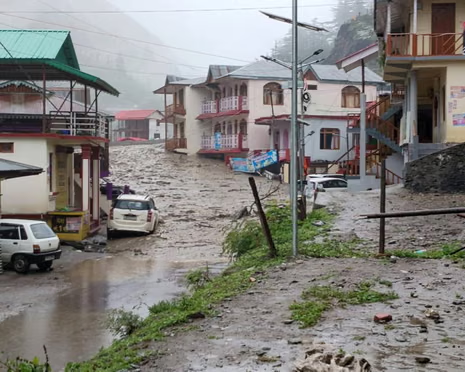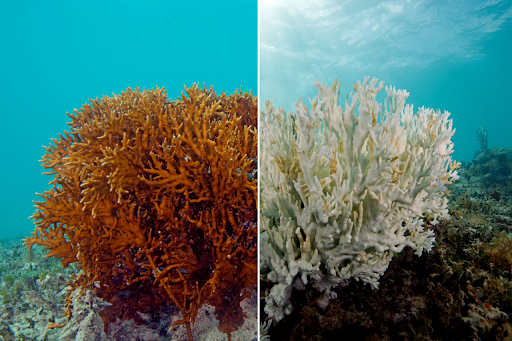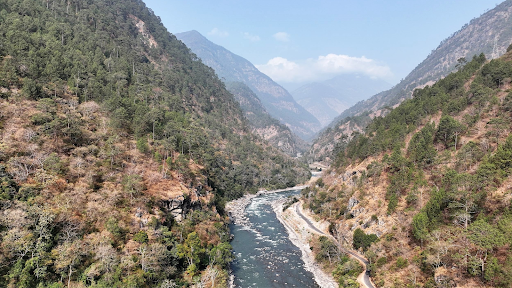



The Tikhir tribe of Nagaland, with a population of 7,537, celebrates the "TSONGLAKNYI" festival, blending traditional and Christian practices. Known for their headhunting past, they now focus on agriculture and hunting. Their first-ever Log Drum Pulling Ceremony was held during the 25th Hornbill Festival, showcasing their rich culture.

Disclaimer: Copyright infringement not intended.
Tikhir tribe of Nagaland held its first-ever Log Drum Pulling Ceremony on the third day of the ongoing 25th Hornbill Festival 2024.
They speak a language called Naga Yimchungru. At one time, the Tikhir were headhunters and a man's prestige depended upon the number of enemies he had killed.
The Tikhir people live in Nagaland in northeastern India. Some live across the border in Myanmar.
They make their living from agriculture and hunting.
Religion: With the arrival of Christian missionaries in Nagaland, most Tikhirs converted to Christianity.
However, many Tikhirs continue to incorporate elements of their traditional folk religion into their Christian practices.
According to the 2011 census, the population of the Tikhir people in Nagaland was 7,537. They are recognised as a Scheduled Tribe (STs) by India.
Festival: They celebrate the "TSONGLAKNYI" festival, which is observed from 9–12 October every year.
The word 'tsonglaknyi' is made up of two words: "Tsong" means Shield and "lak" means sanctification.
It also means the sanctification of the weapons along with their wealth and valuable assets, as well as the purification of the men's folk before going out for headhunting.
It is also called the 'Festival of Festivals'.
Organized every year in the first week of December.
It hosts a colorful mixture of dances, performances, crafts, parades, games, sports, food, fairs and religious ceremonies.
It highlights the tradition of tribal people and boosts the state’s tourism potential.
It reinforces Nagaland’s identity as a unique state in India’s federal union.
It fosters understanding of Nagaland’s resourceful architecture and its ethnic cuisine.
|
Location |
Northeastern India, bordered by Assam to the west, Arunachal Pradesh to the north, Manipur to the south, and Myanmar to the east. |
|
Highest Peak |
Mount Saramati located on the border with Myanmar. |
|
Rivers |
Major rivers include Doyang, Dhansiri, Dikhu, and Tizu. These rivers are vital for irrigation, fishing, and hydropower potential. |
|
Climate |
Sub-tropical and monsoon climate; summers are warm and humid, while winters are cool. |
|
Soil Types |
Mostly lateritic and alluvial soils, suitable for agriculture, especially terrace farming. |
|
Forests |
Dense forests cover about 70% of the state, including tropical and subtropical broadleaf forests and coniferous forests at higher altitudes. |
|
Biodiversity |
Rich in flora and fauna, with significant wildlife like the Blyth’s tragopan (state bird), mithun (state animal), elephants, and hornbills. |
|
Natural Resources |
Abundant in minerals such as petroleum, natural gas, coal, and limestone, although mining activities are limited. |
|
Seismic Zone |
Lies in Seismic Zone V, making it prone to earthquakes. |
|
Significant Features |
Dzükou Valley: Known for its natural beauty and seasonal flowers. |
|
Geopolitical Importance |
Shares a strategic international border with Myanmar, playing a key role in India’s Act East Policy. |
ALSO READ
https://www.iasgyan.in/daily-current-affairs/pakke-paga-hornbill-festival
https://www.iasgyan.in/daily-current-affairs/nagaland-statehood-day
Source:
|
PRACTICE QUESTION Q.Which of the following statements about the Tikhir tribe is/are correct?
Select the correct answer using the code below: (a) 1, 2, and 3 only (b) 1, 2, and 4 only (c) 2, 3, and 4 only (d) 1, 2, 3, and 4 only Answer: d Explanation: Statements 1 and 2 are correct: The Tikhir tribe is located in Nagaland, in the northeastern region of India. They practice animism, with a significant focus on ancestor worship as part of their traditional belief system. Statement 4 is correct: The Tikhir people engage in agriculture, particularly shifting cultivation, as their primary economic activity. Statement 3 is correct: According to the 2011 census, the population of the Tikhir people in Nagaland was 7,537. They are recognised as a Scheduled Tribe (STs) by India. |










© 2025 iasgyan. All right reserved